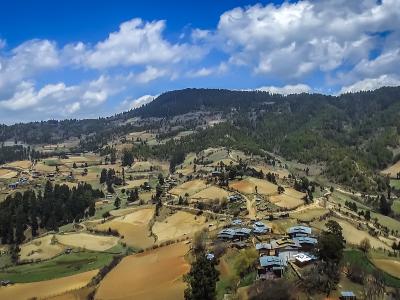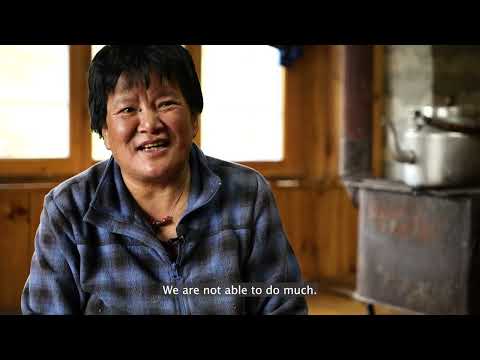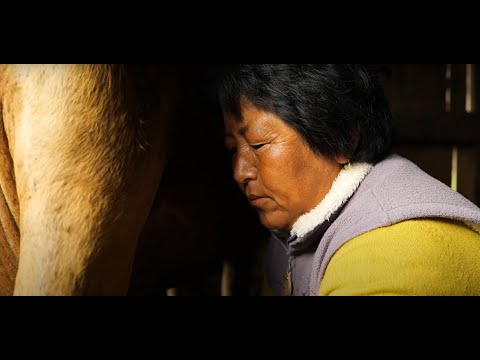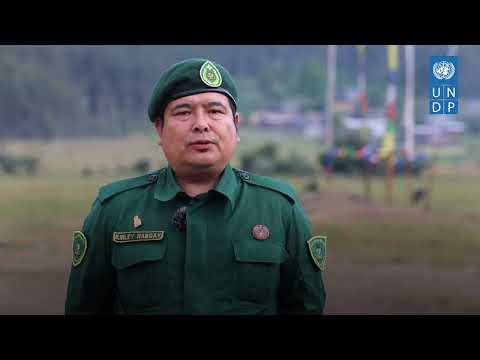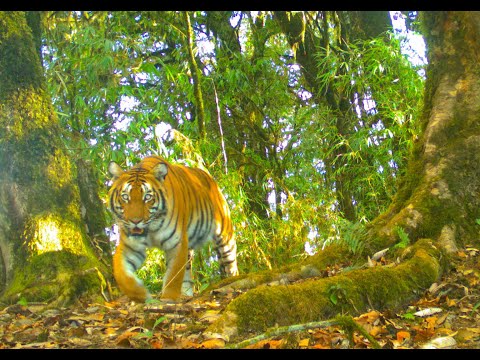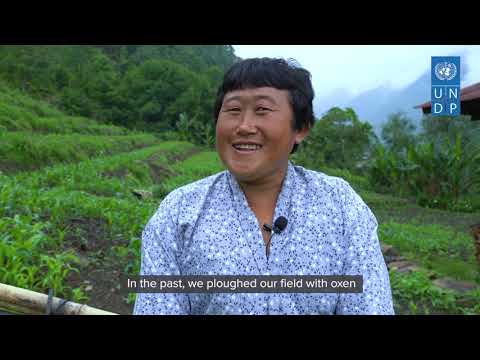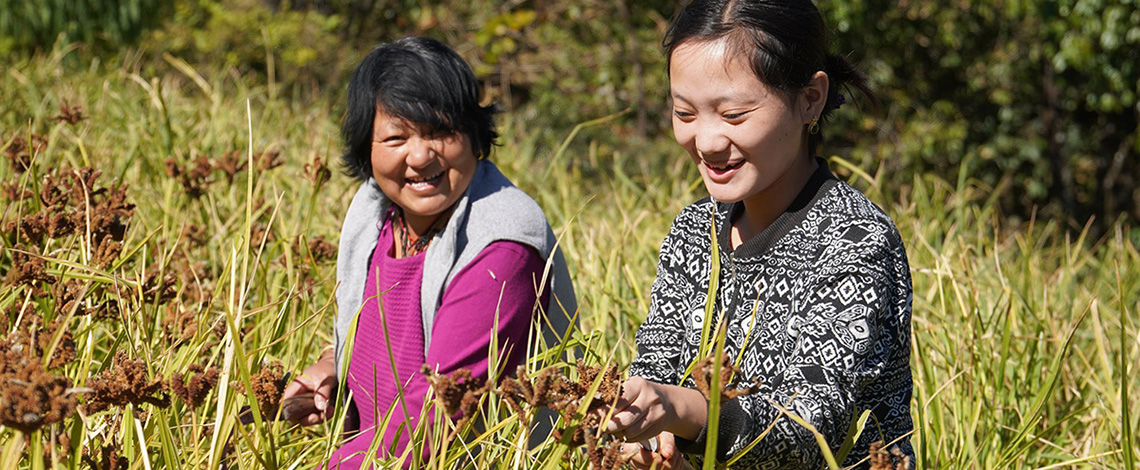
Photo:
The project Enhancing Sustainability and Climate Resilience of Forest and Agricultural Landscape and Community Livelihoods in Bhutan ('NAPA-III', 2017-2023) operationalized an integrated landscape approach by strengthening biological corridors, supporting sustainable forest and agricultural systems, and building the climate resilience of community livelihoods.
The project addressed concerns regarding the adverse impacts of climate change on rural livelihood security and poverty, and the effects of sector-led development practices on the ecological integrity of biodiversity-rich forested landscapes. Bhutan’s renewable natural resource (RNR) sector, which is made up of agriculture, livestock production and forestry forms a significant part of the national economy, as the largest employer with 58 percent of the working population, and with agriculture contributing 16.7 percent to the national economy in 2015. However, the RNR sector is very vulnerable to climate change impacts, which have been increasing as a result of heavy rainfall, drought, frost, hailstorms, windstorms and related land degradation.
In addition to climate-related losses, damage to crops and livestock from wildlife causes major production losses. Bhutan’s biodiversity resources are of regional and global significance and the preservation of intact, forested landscapes through the protected areas network and associated biological corridors is needed to sustain these values. However, climate change impacts and other anthropogenic threats such as land conversion, forest fires, infrastructure development and unsustainable agriculture are placing increasing pressure on biodiversity and the integrity of ecosystems in the country.
The long-term solution envisaged by the project was to ensure the effective climate resilient management of forest areas including biological corridors and adjoining protected areas, securing ecosystem services that underpin livelihoods, local and national development and climate change adaptation.
- Community
- District
- National
- Country Office
- National Governments
- United Nations Development Programme (UNDP)
- Global Environment Facility (GEF)
- United Nations Development Programme (UNDP)
Expected outcomes
Outcome 1: Enhanced institutional capacity for integrated landscape management (ILM) and climate change resilience
Outcome 2: Biological corridor (BC) governance and management established and demonstrated with management linkage to adjoining PAs.
Outcome 3: Livelihood options for communities are made climate-resilient through diversification, SLM and climate-smart agriculture and supported by enhanced climate-resilient infrastructure.
Outcome 4: Knowledge management system established to support sustainable management of forest and agricultural landscapes and climate-resilient communities.
'Climate-resilient agriculture scheme helps revive rice cultivation in Sergithang Gewog, Tsirang', UNDP Bhutan, December 30, 2019
‘Protect landscapes to protect everything’: Bhutan announces national push for climate resiliency and conservation, UNDP Bhutan, November 11, 2017 Bhutan.
'Enhancing sustainability and climate resilience: UNDP and Gross National Happiness Commission sign Least Developed Countries Fund-financed project' , Kuensel Online, October 31, 2017.
'UNDP-GEF to help Bhutan look beyond the climate-environment realm', ReliefWeb, December 14, 2016
The project components can be summarized as follows:
Outcome 1: Enhanced institutional capacity for integrated landscape management (ILM) and climate change resilience: this component will focus on building institutional capacities for ILM as well enhancing climate resilience across rural communities. Specifically, it will incorporate biodiversity conservation objectives and safeguards and climate change concerns in the land use and natural resource use planning and management process, aiming to catalyse an economically and ecologically optimal land use mix and practices in the biological corridors and neighbouring landscapes.
Outcome 2: Biological corridor (BC) governance and management established and demonstrated with management linkage to adjoining PAs: this component will enable the RGoB to operationalize four BCs in the project landscapes through the development of climate-smart conservation management plans and the development of technical capacity and basic infrastructure, including strengthened biological monitoring and law enforcement systems and human-wildlife conflict management interventions to address threats including encroachment and poaching in conjunction with adjoining PAs in the project landscapes.
Outcome 3: Livelihood options for communities are made climate-resilient through diversification, SLM and climate-smart agriculture and supported by enhanced climate-resilient infrastructure: this component supports communities and service providers to enhance climate resilience of livelihoods by optimizing and diversifying production, adding post-production value and improving sustainable access to markets. In addition, it will demonstrate how climate change adaptation and biodiversity conservation as well sustainable forest management objectives can jointly be addressed, creating synergistic impacts for sustainable local development.
Outcome 4: Knowledge management system established to support sustainable management of forest and agricultural landscapes and climate-resilient communities: through this component, the project will ensure that information and knowledge accumulated and produced within the project will be documented and made available for wider communication and dissemination of project lessons and experiences to support the replication and scaling-up of project results.
- UNDPManas MogheTechnical Specialist, Climate Change Adaptation




